Computational Aero-sciences Laboratory
Research Areas
 1. High-speed compressible jets
1. High-speed compressible jets
- Jets are free shear layers harboring a rich set of physical phenomena including vorticity dynamics, turbulent mixing and acoustic emissions.
- We utilize experimentally anchored high-fidelity simulations to understand the evolution of coherent structures and fine-scale turbulence in low-subsonic to high supersonic operating conditions.
- These studies are of relevance to thrust and noise control in commercial turbofan as well as military-style turbojet engines.
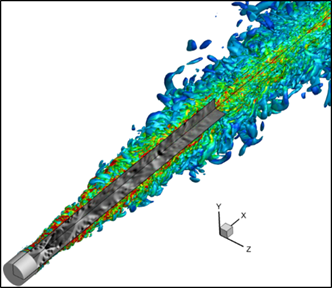



2. Aeroacoustics

- Exhaust jets produce a lot of sound
- A first principle-based noise source identification and control is still an active field of research
- We use a novel fluid-thermodynamic (FT) decomposition to delineate the feeble but highly detrimental acoustic component from the more energetic hydrodynamic component
- This makes quantification of sound and identification of its sources significantly easier, and even yields insight into its controllability
Delineated turbulence and sounds fields of a jet -
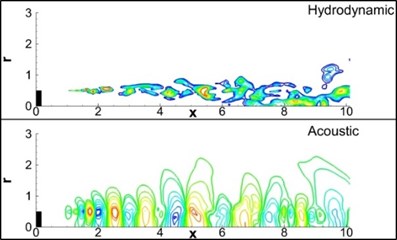

3. Hydrodynamic stability and global analysis
- Linear dynamics of Navier-Stokes equations yield significant insights into the stability of fluid systems, without doing expensive simulations
- Shown is a classical lid-driven cavity problem with its leading instability mode
- We explore operator and operator-free methods to expand the utility of linear analysis to compressible flows in three-dimensional space
- This is critical in identifying unsteadiness and coherent structures in relatively complex flows of practical interest
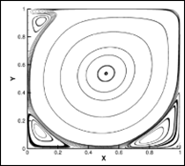
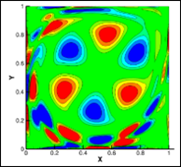
- Mean flow perturbation (MFP) is an operator-free perturbation technique which gives accurate estimates of leading scales of unsteadiiness in 3D flows
- It has also been shown to accurate capture prominent acoustic emissions from free-shear layers
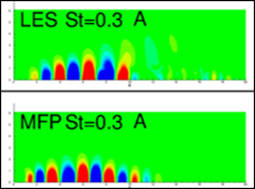

Global stability analysis -
Numerical linearization instability mode extraction
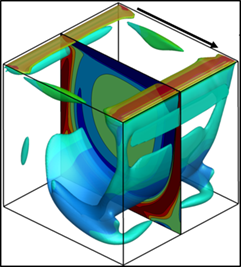

4. Hypersonic flows - stability, transition, and turbulence
- High speed flows, generally above Mach 4 are qualitative different from subsonic and supersonic flows in terms of stability and physical characteristics
- Futuristic civilian transport, space exploration and military technology all relies on accurate prediction and control of fluid flow in this regime
- A major problem encountered here is transition - transition induces increased heating and drag on high-speed vehicles
- We study the role of instabilities in perturbing these flows, causing transition to turbulence
A flared cone model - nonzero pressure gradient boundary layer Mach 6 NASA Compression corner - Shock=boundary-layer integration Mach 5.4

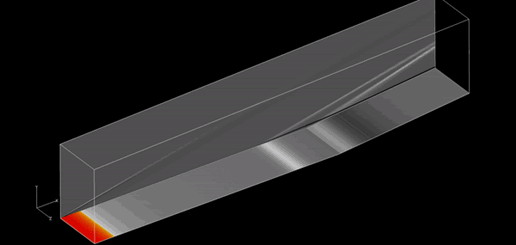
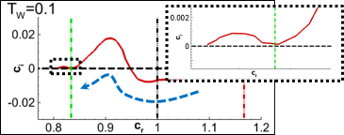
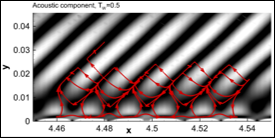
Theoretical and numerical analysis of radiation form cooled-hypersonic boundary layers
Turbulent spots and their evolution
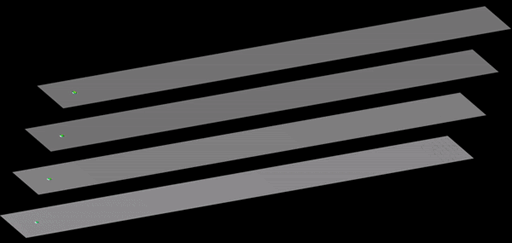
5. Numerics
3-D, Unsteady, Compressible Navier-Stokes equations solved on curvilinear coordinates


Temporal Schemes:
Explicit - Rk3
Implicit - B&W
Spatial schemes:
- Smooth solution fields:
- 6th order compact scheme
- 8th order Pade filter
- 5th/7th order WENO reconstruction
- Compressible scenarios – shock dynamics
- Roe flux calculation
- 3rd order spatial reconstruction – MUSCL based
- van- Leer harmonic limiter for stabilization
- High-fidelity computations for transition and turbulent flows
- Hybridization of compact schemes with the Riemann solver – informed by shock detection routines
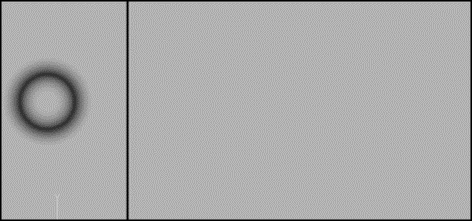
6. Aero-propulsion
- Characterize and quantify the performance of aero-propulsion systems
- Utilize theorical models and simplified analyses to identify sensitive flow features
- Employ turbulence modeling and high-fidelity simulations to evaluate performance deviations in relevant systems
- Current flow problems studied include:
- Non-axisymmetric, heated, over-expanded jets
- Supersonic inlets
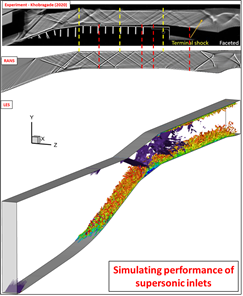



Supervisor: Dr. S. Unnikrishnan, usasidharannair@eng.famu.fsu.edu
